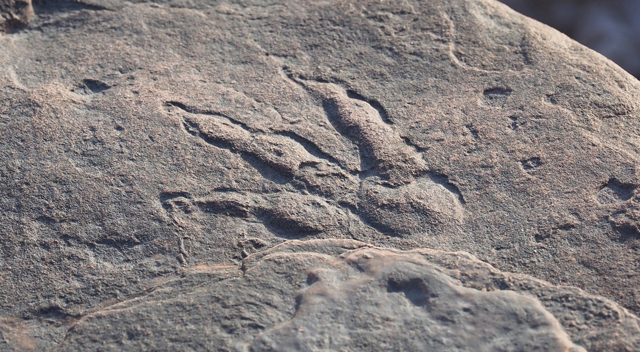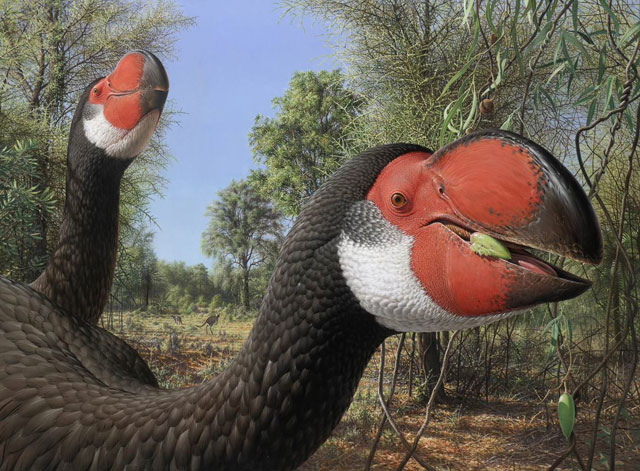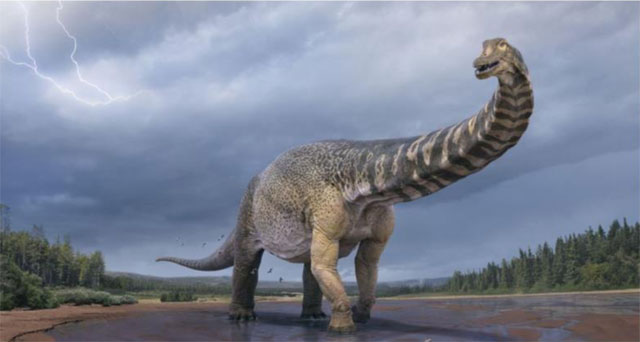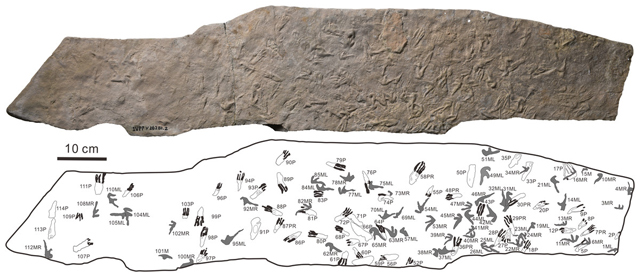As 2021 draws to a close, it is time to reflect on some of the blog articles that we have produced over the last twelve months or so. It has certainly been an incredible year for palaeontology with lots of new fossil discoveries although the impact of the global pandemic has continued to cause havoc when it comes to planning field expeditions. Many museums have been closed and research projects suspended or postponed. We have in our own small way tried to create a sense of normality by continuing to produce daily blog posts. Let us take a look at our favourite posts between January and June 2021 in the first of a two-part series.
In January 2021 we reported upon a study of early sauropodomorph brains, the role of plant-eating dinosaurs in seed dispersal, oviraptorid incubation, the world’s oldest cave art on the island of Sulawesi and how Ediacaran fossils were helping scientists to piece together the evolution of the first animals. Our favourite January post concerned the discovery of a three-toed dinosaur footprint discovered near the town of Barry in South Wales. Fossilised footprints are known from Mercia Mudstone Group exposures in the Vale of the Glamorgan, but not many dinosaur tracks are discovered by four-year-olds.

Grallator track spotted by a 4-year-old girl at Bendrick Rock (South Wales). Picture credit: National Museum Wales
Picture credit: National Museum Wales
Here is the blog post: Four-Year-Old Finds Dinosaur Footprint.
Mammoths and “Thunderbirds”
February saw team members admiring prehistoric animal drawings sent into us by customers, articles on why horned dinosaurs evolved elaborate frills, our work on information panels for a major exhibition, the breeding habits of Neanderthals and the confirmation of concentrated levels of iridium found at the Chicxulub impact site. Our favourite article was published on the 17th of February, scientists had recovered DNA from mammoth remains that were up to 1.2 million years old. This new data provided a fresh perspective on the evolution of prehistoric elephants.
Our mammoth DNA blog: Million-year-old DNA Sheds Light on Mammoth Evolution.
In March, team members blogged about the mystery surrounding why there were so few medium-sized theropod dinosaurs, provided confirmation of troodontid dinosaurs in Europe, the earliest titanosaur on record, discussed a scientific paper that proposed that cephalopods evolved 30 million years earlier than previously thought and examined the extinction threat to extant amphibians.
Our favourite post was put up on the last day of the month. It focused on a newly published paper that proposed that the giant flightless “Thunderbirds” of Australia were related to gamefowl: Studying the Brains of Australia’s “Thunderbirds”.

A life reconstruction of the giant Australian “Thunderbird” Dromornis stirtoni of the Late Miocene. Picture credit: Peter Trusler.
Picture credit: Peter Trusler
Yamatosaurus and Moroccan Marine Reptiles
In April we blogged about the origins of the Amazon Rainforest, a new abelisaurid from Argentina, the legs of trilobites, ancient mammals from southern Gondwana and a new species of pterosaur from China. Our favourite post took us to Japan as we wrote about Yamatosaurus izanagii, the second hadrosaur to be named from fossils found in the “land of the rising sun”.
Japan’s second duck-billed dinosaur: Japan’s Second Hadrosaur.
The early summer sunshine of May prompted us to write about crocodile conservation at Miami Zoo, billion-year-old microfossils from Scotland, Mongolian dromaeosaurids and dinosaur bones from the dry and parched Australian Outback. However, it was an article that described a new species of giant mosasaur from the Ouled Abdoun Basin of Morocco that ticked all the boxes for us: Giant Moroccan Mosasaur – Pluridens serpentis.
Jurassic June
“Jurassic June” involved discussions on the PNSO Allosaurus and Torvosaurus models, the necks of Early Jurassic plesiosaurs and exploring the “Jurassic Coast” of Dorset. We also wrote about stegosaurs from the Arctic Circle, the official scientific description of the Australian dinosaur nicknamed “Cooper” (Australotitan cooperensis) and looked at a paper that reinterpreted the famous Burgess Shale of British Columbia.

A life reconstruction of the newly named Australotitan cooperensis, the largest known animal to have ever lived in Australia. Picture credit: Queensland Museum
Picture credit: Queensland Museum
Our favourite post concerned the discovery of a remarkable series of pterosaur tracks in China. The extensive trackway consists of over 100 individual prints and it was given the moniker the “pterosaur dance floor”.
To read about “dancing” pterosaurs: A Pterosaur Dance Floor from China.

A photograph of the tracksite with an interpretative line drawing. The tracks have been assigned to the new pterosaur ichnospecies Pteraichnus wuerhoensis. Picture credit Wei Gao.
Picture credit Wei Gao
This concludes our look at blog posts produced in the first half of 2021. We shall post up part two of this short series looking at our favourite blogs from July to December 2021, in the very near future.
The Everything Dinosaur website: Dinosaur Toys.






Leave A Comment